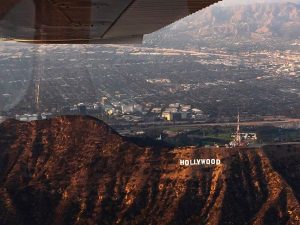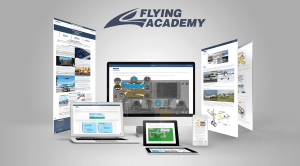What is the Instrument Rating – IR(A)?
- IR(A) allows you to fly in any kind of weather including low visibility weather conditions or in clouds and even above
Instrument rating – IR(A) is a qualification that allows a pilot to fly according to Instrument Flight Rules (IFR) with a minimum decision height for landing of 60m (200 feet). In case of a Multi Engine IR, the privilege can be extended to Multi engine operations . - IR(A) is a must for professional airline pilots
Instrument Rating is required by all airlines prior to recruitment. To find out more about how to become a Professional Pilot, please click here. - Instrument Rating is also one of the most useful ratings for private pilots, especially during long-distance flights
What are the Instrument Rating – IR(A) course entry requirements?
The Instrument Rating – IR(A) course entry requirements are as follows:
- to be at least Class 2 Medical with audio extension holder
You need to be physically fit for flying (capable of holding a First class medical certificate or Class 2 medical certificate with audio extension). - to be a PPL(A) holder
You need to hold at least an EASA Private Pilot License – PPL(A) with Night Rating. - to be proficient in the English language
You need to be proficient in the English language ICAO English Language Proficiency minimum level 4 and pass the IFR English (FCL 055d). - to fly at least 50 hours cross-country as Pilot-in-Command
Prior to the final practical flight examination, you need to have at least 50 PIC cross-country flight hours. - to have your theoretical exams passed
You need to have the theoretical exams passed – either IR(A) or ATPL(A) theory. - to have sufficient knowledge of Mathematics and Physics
You must be able to make some basic mental calculation and have a minimum of knowledge in Mathematics and physics, no degree or scholarship are needed but an evaluation will be done by the Academy.
What can I do with my Instrument Rating – IR(A)?
Fly under Instrument Flight Rules in any kind of weather according to the minimum IFR.
The IR allows you to fly in low visibility weather conditions, according to Instrument Flight Rules (IFR) with a minimum decision height of 60m (200feet) .
Once you complete your Instrument Rating training, you will get your IR/SE(A) qualification added on your EASA Private Pilot License – PPL(A).
The Instrument Rating extends the privileges of PPL(A) to flying under Instrument Flight Rules in any kind of weather according to the minimum IFR.
After completing your Instrument Rating (A), you can also extend the privileges to multi-engine piston aircraft.
How can I get my Instrument Rating – IR(A)?
Step 1: complete the theoretical training
The theoretical training is provided in a form of ground briefings/debriefings to help you understand what will be expected from you in the following flight. The briefings are divided into 3 stages.
Stage I:
You will learn the principles of instrument flying, including the operation, use, and limitations of flight instruments and instrument navigation systems. You will also learn how air traffic control systems function and the use of instrument flight charts for IFR planning and flight. Emphasis will be placed on advanced human factors and physiological factors directly related to instrument flying.
Stage II:
You will learn the procedures used to execute the various IFR approaches as well as the procedures for IFR departure, en-route and arrival operations.
Stage III:
You will learn to analyze weather information, conditions, and trends while on the ground and in flight. In addition, the student will learn IFR flight planning and emergency procedures and develop a greater understanding of the decision making process.
Step 2: complete the practical training
Flight training consists of two modules – basic instrument flight module (BIFM) and procedural instrument flight module for a total of 50 flight hours if you are not Commercial Pilot License, CPL(A) holder yet or 40 hours if you are already a CPL(A) holder.
Basic instrument flight module covers:
- Basic instrument flight without external visual references (horizontal flights, climbing, descending, turns in
- level flight, climbing, descending)
- Instrument pattern
- Steep turn
- Radio navigation
- Recovery from unusual attitudes
- Partial instrument panel
- Recognition and recovery from incipient and full stalls
Procedural instrument flight module covers:
- Pre-flight procedures for IFR flights, including the use of the flight manual and appropriate air traffic services documents in the preparation of an IFR flight plan
- Procedure and manoeuvres for IFR operation under normal, abnormal and emergency conditions
- Transition from visual to instrument flight on takeoff standard instrument departures and arrivals
- En-route IFR procedures
- Holding procedures
- Instrument approaches to specified minimal
- Missed approach procedures
- Diversion to an alternate airport
- Landings from instrument approaches, including circling to land
- In flight maneuvers and particular flight characteristics
Step 3: pass the practical flight examination
The practical examination include and flight preparation and the flight part itself with an examiner, you will need to demonstrate your ability to:
- Prepare your flight according to the regulation including weather, flight planning, alternate, performances and you will be interrogated by your examiner on all these points.
- Operate the airplane within its limitations
- Complete all maneuvers with smoothness and accuracy
- Exercise good judgment and airmanship
- Apply your aeronautical knowledge
- Maintain control of the airplane at all times
- Respect all regulations and limitation specific of IFR flights
How much does the Instrument Rating – IR(A) course cost?
The course price starts from 9127 EUR. The price includes all components needed for being able to comply with the IR(A) issuance requirements
Training fees are covering the following items and services:
- Instructor time for practical training only
- Aircraft rental with fuel
*All training fees are bound to the actual exchange rates of the local currency of the Flying Academy base where the training or a part of the training is provided. Learn more about complete training fees.
How long does it take to complete the Instrument Rating – IR(A)?
The duration of IR(A) training depends on the trainee’s time availability for both theoretical and practical training and the average duration is 2 months.




